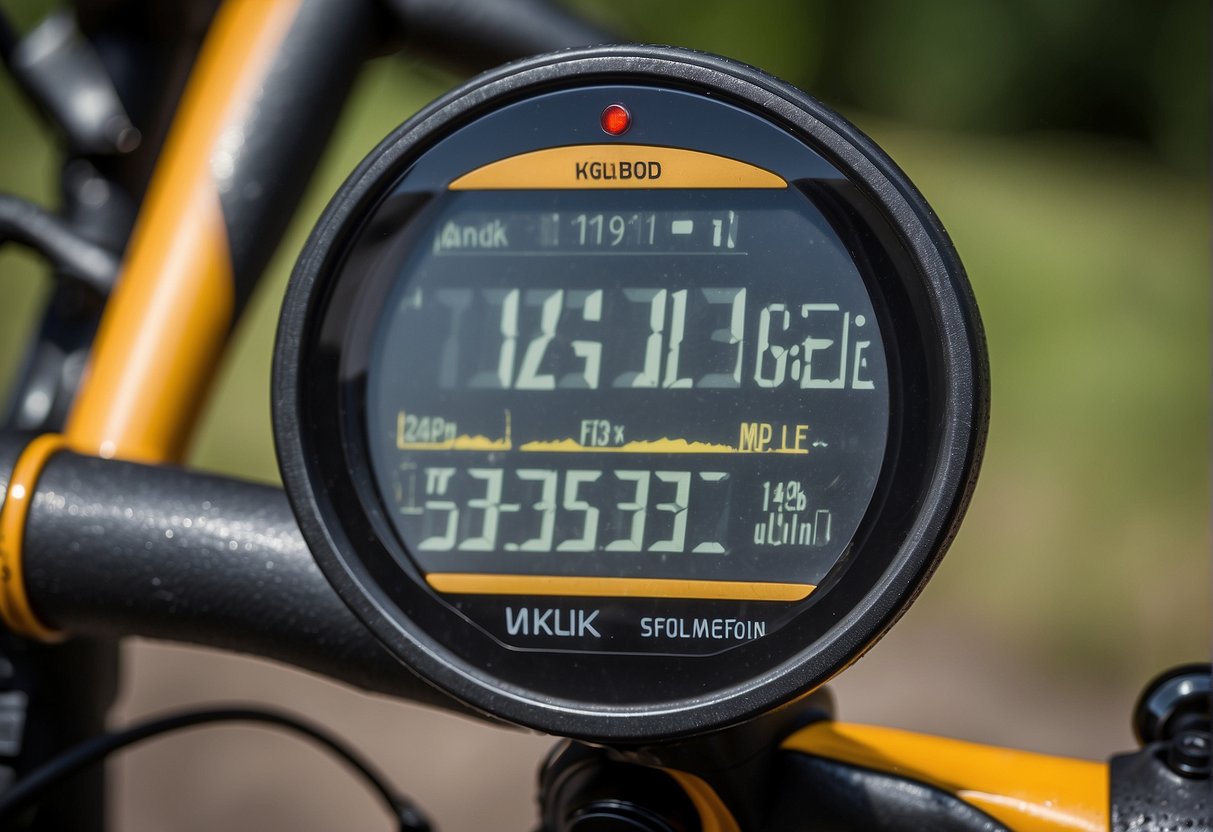📦 FREE Shipping
How Many Calories Do You Burn Biking 1 Mile 2024? Experts Explain

Whether it’s a leisurely ride or a high-speed sprint, every mile on your bike counts. “How Many Calories Do You Burn Biking 1 Mile? Experts Explain” pedals through the factors determining your caloric expenditure for each mile traversed.
How Many Calories Do You Burn Biking 1 Mile?

Calories are the energy units your body uses for all its functions, and when you bike, you’re essentially setting those calories ablaze in a fiery workout. One Metabolic Equivalent of Task (MET) represents the rate at which you burn energy while sitting quietly.
Biking accelerates your MET, turning up your metabolic rate and thus increasing the calories burned.
Each vigorous pedal stroke is a step towards a higher energy expenditure. Intensity and duration are key; the faster (increased speed) and longer (more significant duration) you bike, the more calories you torch. Whether cruising down a bike path or racing against a friend, your body’s engine revs up, using energy and burning calories as the fuel keeps it moving forward.
Factors Influencing Caloric Expenditure During Biking
Several elements play a crucial role in the caloric furnace that is your bike workout:
- Weight and Body Composition: The more you weigh, the more energy (calories) you’ll burn. Your body weight and muscle mass affect this greatly because the more you have, the higher the energy cost.
- Age: Your metabolic rate changes with age, as does the rate at which you burn calories.
- Fitness Level: As your fitness level improves, your body becomes more efficient, potentially burning fewer calories for the same distance, unless you increase the intensity.
- Heart Rate: The harder your heart works, the more calories you’ll burn. A higher heart rate reflects more intense effort, which means a greater calorie burn.
Here’s a quick glance at how someone of a particular weight can expect to burn calories at different biking speeds:
| Body Weight | Speed (mph) | Calories Burned per Mile |
|---|---|---|
| 170 lbs | 5.5 | Approximately 50 |
| 198 lbs | 5.5 | Approximately 58 |
| 150 lbs | 14 | Approximately 48 |
| 200 lbs | 14 | Approximately 64 |
| 150 lbs | 20 | Approximately 56 |
| 200 lbs | 20 | Approximately 75 |
Measuring and Increasing Calorie Burn

Your calorie burn during a bike ride can vary widely based on several factors, such as your weight, pace, and resistance. Calorie calculators and monitors are your go-to tools for getting precise insights. A cycling calculator can estimate the calories burned based on inputs like your weight, riding pace, and duration. For example:
- If you weigh 150 pounds and cycle at a moderate pace of 14 mph, you might burn approximately 48 calories per mile.
- At a more vigorous 20 mph, caloric burn could increase to around 56 calories per mile.
For real-time data, consider strapping on a heart rate monitor or a fitness tracker. These devices measure your heart rate and combine it with your personal data to deliver an accurate calorie burn count for your rides.
Enhancing Calorie Burn Through Strategized Biking Activities
To boost the calories you burn while biking, focus on a mix of both aerobic and anaerobic exercises:
- Aerobic Riding: Maintain a steady, moderate pace to stay in a low-impact, fat-burning zone. Regularly include longer rides at a consistent speed to build endurance and burn calories.
- Anaerobic Sprints: Integrate intervals of high-speed, high-intensity biking. Short, anaerobic bursts can elevate calorie burn and improve your strength.
Adjust resistance when possible to simulate uphill biking, increasing the intensity and calorific output of your ride. Alternating between different resistance levels can mimic a hilly terrain, providing the following benefits:
- Enhanced muscle engagement.
- Increased metabolic rate post-ride.
Remember, it’s not just about going fast; varying your pace and resistance plays a vital role in maximizing your calorie burn. Keep it fun, stay consistent, and watch your calorie burn soar as you enjoy your biking adventures!
Health Benefits Beyond Calorie Burn

Biking is a fantastic exercise for enhancing your overall health and fitness. It’s a cardiovascular champion, elevating your heart rate and increasing lung capacity. This means your heart pumps more efficiently, which is excellent news for reducing the risk of heart disease.
As you pedal, you’re also strengthening major muscle groups, particularly in your legs, but also your core and arms. Since it’s a low-impact activity, your knees and joints are spared the harsh impacts found in activities like running.
Muscle gain: Biking regularly can lead to toned and strengthened muscles, especially if you vary your cycling intensity or tackle hilly terrain.
Joints and flexibility: With each revolution, you’re improving the range of motion in your knees, hips, and ankles, contributing to better joint health and flexibility.
Weight management: Regular biking can help maintain weight loss and reduce body fat, as it’s a great way to increase calorie burn in a fun and engaging way.
Mental health boost: The mental benefits are just as exciting. Exercise like biking can release endorphins, lifting your mood and improving mental clarity.
Comparative Benefits to Other Forms of Exercise
Cardiovascular advantages: When you compare to a stationary bike, outdoor biking can provide extra resistance from terrain and wind, enhancing your workout intensity and burning more calories.
Muscle engagement: Unlike activities where you might isolate muscle groups, biking is a comprehensive workout, engaging various muscles across your body.
Versatility: Biking speed and style variations from leisurely rides to mountain biking or racing means you can tailor your exercise to your fitness goals, whether that’s improving your cardiovascular health or building muscle.
Convenience and fun: It doubles as transportation; swap out the car ride for a bike journey and integrate a workout into your daily routine.
Accessible fitness: Biking suits various fitness levels. You can start at a gentle pace and gradually increase your speed and distance as your fitness improves.
FAQ:
How many calories do I burn biking for 30 minutes?
Biking for 30 minutes typically burns between 200 to 500 calories, depending on your weight and cycling intensity.
How far do you have to bike to burn 1000 calories?
To burn 1,000 calories, you may need to bike approximately 15 to 30 miles, depending on speed and intensity.
How many calories is 100 miles on a bike?
Cycling 100 miles can burn between 3,000 to 6,000 calories, influenced by terrain, speed, and individual factors.
How far is 500 calories on a bike?
Riding a bike for 500 calories could cover a distance of about 12 to 15 miles, varying with your cycling efficiency and intensity.
If this article about the question: “How Many Calories Do You Burn Biking 1 Mile” helped you, don’t forget to leave us a comment down below about what you think of the article.

